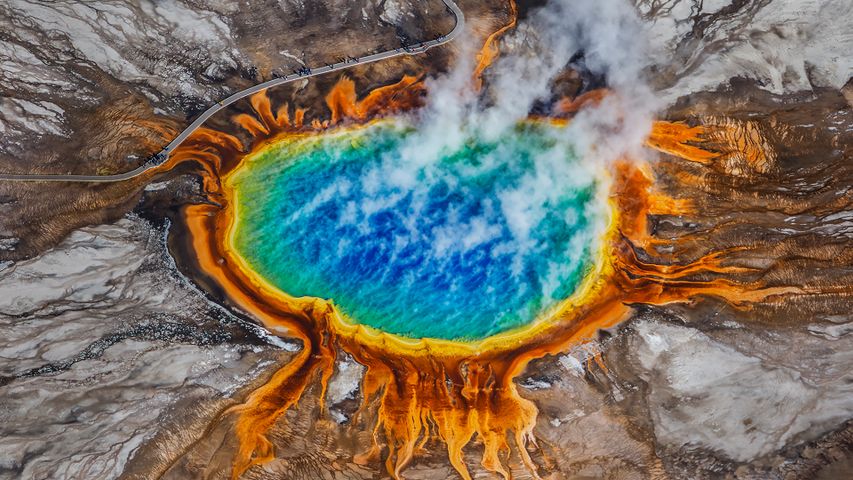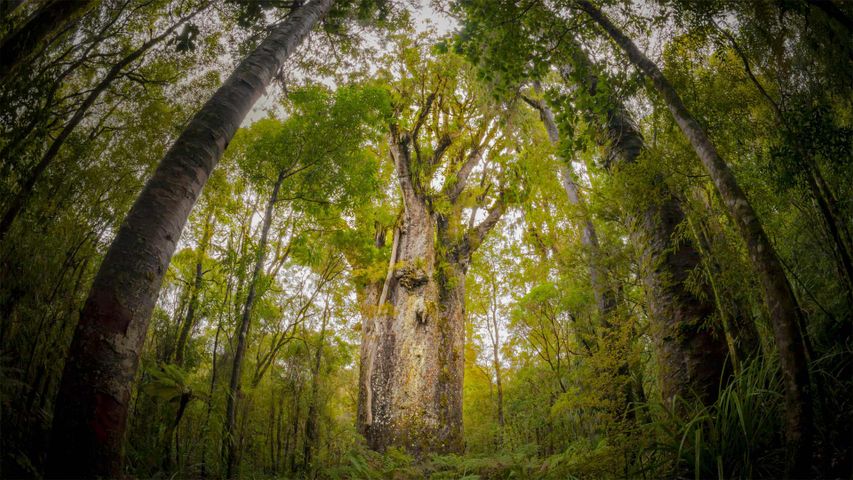Mississippi River on the border between Arkansas and Mississippi
© NAS
Gazing down on planet Earth
It's Earth Day today and we are high above the blue marble looking down on the border between Arkansas and Mississippi. Those small, blocky shapes are towns, fields, and pastures – the teal green is the mighty Mississippi River. Anyone who has flown in the window seat of an airplane and has gazed down at Earth below might wonder why the colours in this image are so unreal. That’s because they are. These images were taken in 2013 by Landsat 7, a NASA satellite that uses thermal infrared sensors to help scientists better distinguish flora, fauna, water, and manmade objects. For almost 50 years, NASA has been using satellite imagery to understand how climate change and population growth are affecting our fragile planet. These satellites help NASA see where deforestation and wildfires are happening, where glaciers are melting, and how rising waters are encroaching on cities.
The biggest cause of these changes? According to NASA, it’s us. Since the first Landsat launched in 1972, the Earth’s population has almost doubled, from 4 billion people then to 7.8 billion today. But there is some good news to mark this Earth Day. The Mississippi River we see here is much less toxic now than it was back in 1972, thanks to environmental laws and regulations.
Related Images
Bing Today Images


 Bottle cap mural by Oscar Olivares in Guatire, Venezuela
Bottle cap mural by Oscar Olivares in Guatire, Venezuela
 Mona Vale Rockpool, Sydney, Australia
Mona Vale Rockpool, Sydney, Australia
 'The Spirit of Electricity' by Raoul Dufy, Museum of Modern Art, Paris, France
'The Spirit of Electricity' by Raoul Dufy, Museum of Modern Art, Paris, France
 A delta in the Venetian Lagoon, Italy
A delta in the Venetian Lagoon, Italy
 Grand Prismatic Spring, Yellowstone National Park, Wyoming, United States
Grand Prismatic Spring, Yellowstone National Park, Wyoming, United States
 Lathmar Holi in Nandgaon and Barsana, Uttar Pradesh
Lathmar Holi in Nandgaon and Barsana, Uttar Pradesh
 Desert bighorn sheep in Valley of Fire State Park, Nevada, United States
Desert bighorn sheep in Valley of Fire State Park, Nevada, United States
 Eucalyptus trees, Megalong Valley, Blue Mountains National Park, NSW, Australia
Eucalyptus trees, Megalong Valley, Blue Mountains National Park, NSW, Australia



